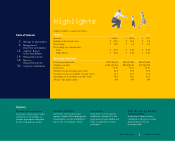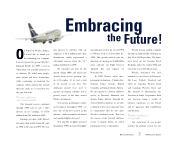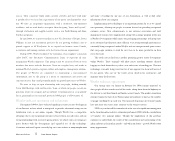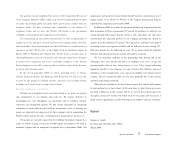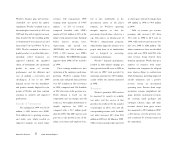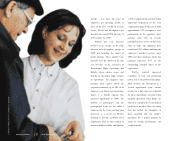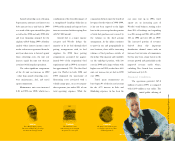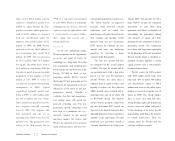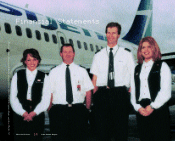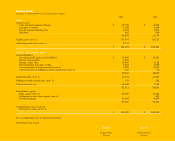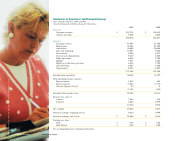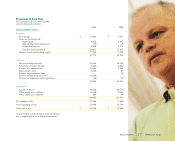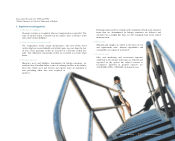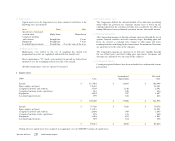Westjet 1999 Annual Report Download - page 12
Download and view the complete annual report
Please find page 12 of the 1999 Westjet annual report below. You can navigate through the pages in the report by either clicking on the pages listed below, or by using the keyword search tool below to find specific information within the annual report.
aircraft a year later. In terms of
employees per operating aircraft or
those in the fleet actually in revenue
service, WestJet had 83 employees per
aircraft at the end of 1998, but only 73
by December 31, 1999.
Normal pay scale increases
resulted in an average of 5% wage
increases over all employee groups in
1999, not including the impact of
profit sharing. These planned pay
increases were the drivers for the unit
cost increases in the categories of
Reservations, Flight Operations, and
Inflight, where salaries, wages, and
benefits are the largest single category
of expenditure. The employee share
purchase plan, under which the
corporation matches up to 20% of an
employee’s pay that is used to purchase
shares, is a benefit expense that
increased significantly in 1999. The
number of participants and the
participation levels by the airline’s
employees in the share purchase plan
increased as a result of WestJet
deciding to become a publicly listed
corporation. This in turn resulted in
increased market visibility and liquidity
as well as enhanced the potential of this
important component of the total
compensation plan. At the end of 1999
approximately 75% of employees were
participating in the employee share
purchase plan with an average
participation level of 11% of their base
salary or wage. The employees have
contributed $8.1 million, including the
employer’s matched portion, since
1996 and share purchases under this
program represent 5.7% of the
outstanding common shares of the
corporation.
WestJet realized improved
economies of scale and purchasing
power, due to the growth of the airline.
Most notably, the investment in a
second operational spare aircraft
resulted in a 45% unit cost reduction
for those expenditures associated with
irregular operations when flights are
delayed or cancelled due to mechanical
problems or weather. This cost saving
does not include the intangibles of
guest goodwill and our airline’s
reputation for a quality product in
terms of on-time performance and
completion rate.
10
WestJet Airlines 1999 Annual Report
Andrea is a GoGetter at the Calgary Airport.



